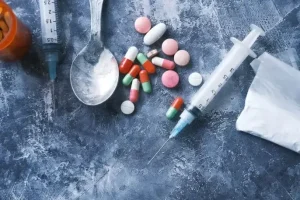
The best rehab facilities are accredited by independent organizations,such as The Joint Commission, the Commission on Accreditation of Rehabilitation Facilities or the Council on Accreditation. Not only is addiction relapse common, relapse is not considered a sign of failure. In fact, people in recovery might be better off if the term “relapse” were abandoned altogether and “recurrence” substituted, because it is more consistent with the process and less stigmatizing. For many of those who are addicted, enduring even that action is unimaginable.
Setting Long-Term Goals
- By incorporating these behavioral changes, individuals can create a strong foundation for long-term sobriety and a healthier, more fulfilling life.
- Additionally, NIDA states that 12 months is the minimum amount of time required for methadone maintenance.
People often ask what the average length of stay in a drug rehab center is. Addiction treatment typically lasts 30 days, but some programs last 60 or 90 days. If you have a mild addiction, you may only need to stay in treatment for a few weeks. However, you may need to stay in treatment for several months if you have a severe addiction. Research and clinical experience have identified a number of factors that promote recovery. Another is reorienting the brain circuitry of desire—finding or rediscovering a passion or pursuit that gives meaning to life and furnishes personal goals that are capable of supplanting the desire for drugs.
Aftercare: What Happens After Rehab?

The length of treatment depends on the individual and the severity of their addiction. Group therapy is linked with positive outcomes for addiction recovery because of the social support it offers. Members benefit from sharing their experiences, hearing other people’s stories, forming bonds, and supporting each other. There are often recovery groups that offer safe spaces for people of certain genders, ages, and cultural backgrounds. Some rehab centers offer LGBTQ+ groups or groups for those who have been previously incarcerated.
Effective ways to overcome bulimia
Open communication and involvement in the recovery process help strengthen these relationships and create a supportive environment. Our relapse prevention therapy program empowers you with the strategies and skills to maintain sobriety and navigate daily challenges. At The Recovery Team, we are dedicated to assisting you in breaking the cycle of drug abuse. Take some time to explore the thoughts, emotions, and circumstances leading to the relapse. Self-reflection can help you identify any underlying issues that need to be addressed and develop strategies for coping with triggers more effectively.
However, a majority of people with a substance use disorder do not get help. According to the National Survey on Drug Use and Health, 21.7 million people aged 12 or older needed addiction treatment in 2015, yet just 2.3 million went to rehab. Seeking treatment can be one of the most important steps you take to ensure your health and well-being. Rehab facilities are located across the U.S. and many offer specialized treatment to cater to individual needs. Our directories tool allows you to find treatment centers near you that align with what you are looking for. One of the easiest ways to figure out how long you need to stay in drug rehab is to contact the National Rehab Hotline.

How to know if you have a shopping addiction

Depending on the setting and the amenities offered, daily activities may vary. 90-day programs are one of the most impactful because it allows for more time to become adjusted to life without drugs or alcohol. During this time, you’ll be able to strengthen your sobriety skills and identify any potential triggers that can cause relapse. This is a program that individuals rarely take on their first attempt at treatment, however, many who experience a relapse after leaving treatment frequently share that they wish they did. 60-day programs have the benefit of added time and support throughout treatment. In these programs, the extra 30 days will provide opportunities to dive deeper into the emotions and experiences that may be at the root cause of your substance use disorder.
We also look at what influences the length of stay and help you figure out which rehabilitation program is right for you. Many rehab clients drop out of treatment only to return after relapsing. While predetermined treatment lengths exist, the most successful recoveries come after prolonged stays. As treatment extends past 90 days, rehab graduates show increased abstinence rates.
- Symptoms of withdrawal may linger anywhere from six months to years after last use.
- Recognizing that treatment is more of a marathon than a sprint will help place things in perspective.
- You may be given a break during the session to reflect, journal, or practice any skills you learned during the session.
- To treat a very common symptom like fatigue, Sanders prefers supplement combinations over other drugs like Modafinil or Adderall.
- Some treatment centers provide specialized therapy sessions through the use of specially designed therapy techniques or modalities.
Family Support and Addiction Recovery
- Shame is an especially powerful negative feeling that can both invite addiction in the first place and result from it.
- Which means Paxlovid may help some long COVID patients but not others, Sanders explained.
- These programs usually consist of a minimum of 3 months and a maximum of 6 months.
- Some peopleare introduced to therapy or supplemental services near the end of detox.
- The length of treatment depends on the individual and the severity of their addiction.
Programs that treat certain groups of people, like women, Veterans, or LGBTQ+, are available. You can speak with a person at the long-term rehab center to find out how the facility approaches treatment. During inpatient rehab, receiving treatment for a mental health condition, such as a co-occurring mental health disorder, is possible. The purpose of inpatient how long is drug rehab rehab is to take away some or all of the triggers that might have pushed you to take drugs in the first place. Inpatient programs include detoxing services and are typically available in 30-day, 60-day, and 90-day programs. Some facilities will allow extensions on these programs if individuals feel they would benefit from more time spent in treatment.
Relapse carries an increased risk of overdose if a person uses as much of the drug as they did before quitting. Many types of recovery support are available, and many people make use of more than one type at any time and may shift from one type of support to another as recovery proceeds and needs evolve. An increasing number of high schools and colleges https://ecosoberhouse.com/ offer addiction recovery resources (CRPS, or Collegiate Recovery Programs) for students, including mentors, workshops, dedicated lounges, and group meetings and activities. In addition, self-care is a vital foundation for a healthy new identity. At the very least, self-care should include sleep hygiene, good nutrition, and physical activity.